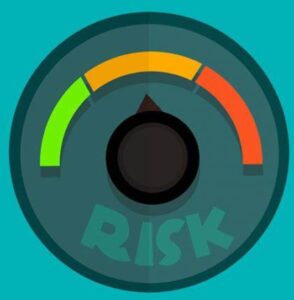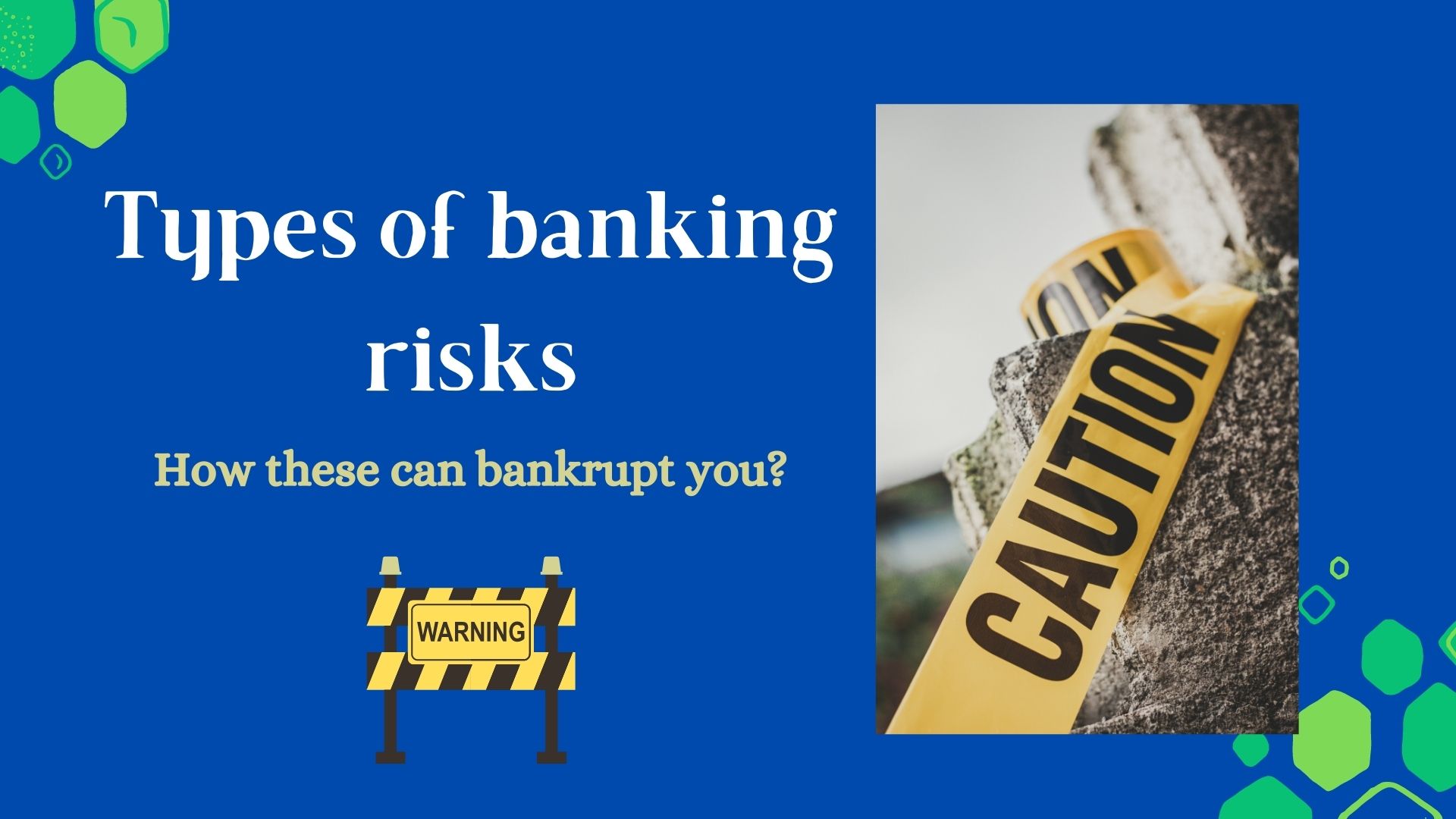You keep your hard-earned money in the Bremer bank, but what if the bank itself declares bankruptcy? Your money with the bank will remain with the bank forever. To avoid such situations risk management systems were introduced with respect to Basel norms, CAMELS, and AIRB (Advanced Internal Ratings- Based) approaches to maintain the financial health of the banks. There are different types of banking risk to which banks are exposed and mitigating such risks are critical for the sound functioning of the banking system. Let us study in detail if your money is safe in Bremer Bank? What are the risk in Bremer bank?
Table of Contents
Types of banking risk in Bremer Bank:
Below are the types of banking risks in Bremer Bank explained in detail:
- Credit risk – The risk comes from the borrower’s inability to pay back the loan. So, that’s why banks can specialize their credit to certain regions, industries, or types of borrowers. Every borrower usually has a credit score to determine their creditworthiness. This is the first thing that banks look into before they give out the loans. However, loans are still the most profitable assets, hence they are very risky at the same time. One of the solutions to this is to diversify the loans (creating a loan credit portfolio) to avoid systematic risks. Other than that, credits are also protected by reserves and insurance. Credit risk is one of the common types of banking risk.
- Liquidity risk – Banks are not allowed to disburse all the deposits they have as loans. They should have additional money available for depositors to withdraw at any time. Liquidity risk may squeeze the bank’s ability to meet its daily obligations on time and meet the working capital requirement. This is one of the types of banking risk which is directly impacted by a cash reserve ratio, capital adequacy ratios, and reserves.
- Market risk – Banks are exposed to the fluctuation of asset prices. The risk includes interest risks or foreign exchange risks. Market risk is the type of banking risk that is uncontrollable. The banks can only react not control the changes in the external environment.
- Operational risk – Operating expenses may vary significantly because of many factors both internal and external. Operational risks are a type of banking risk that involves cybersecurity risks, higher operational costs, internal frauds, employee training, NPA’s, etc
- Legal risk – This is the type of bank risk that exists due to changing government rules, regulations, political and economical environment, changes in laws, legal legislation, etc. If this risk is not mitigated the banks may be heavily penalized for not meeting audit and legal compliances on time.

Risk management for banks like Bremer
Banks can easily fall prey to fraud, as they are very much exposed to types of banking risks with no way to forecast upcoming risks. Examples of failure of big banks due to their inability to sustain the risk exposure are already available in the market. Thus strong risk management framework is formed to enhance the bank’s ability to mitigate risks and minimize failures.
The Basel Norms / Accords are three series of banking regulations (Basel I, II, and III) set by the Basel Committee on Bank Supervision (BCBS), which provides recommendations on banking regulations in regards to capital risk, market risk, and operational risk. The purpose of the accords is to ensure that financial institutions have enough capital on account to meet obligations and absorb unexpected losses.
Basel III Norms
Some significant changes are done in the Basel III accord over earlier accords for better supervision and regulation of the banking industry:
- One of the important essentials of Basel III is to enhance the capital quality of banks. The good capital quality will allow higher loss-absorbing capacity to the banks in their time of stress.
- A Capital Conservation buffer of 2.5% is recommended in Basel III. This conservation buffer will help to reduce the losses during the time of economic and financial pressure.
- A countercyclical buffer is also presented with the objective to upsurge capital need in upright times and decline the same in unfavorable times. This buffer will cause a slowdown in the banking activities when it is a good time for the sector and will boost lending activities when times are not favorable.
- The least requirement for common equity in this accord is changed from 2% to 4.5% of total risk-weighted assets. Tier 1 capital requirement is also raised from 4% to 6%. This will lead to better shock absorbing power in the bad times.
- These norms include a leverage ratio to help as a safety net. In the financial crisis of 2008, it was noted that the worth of many assets fell more rapidly than expected from past experiences and so the leverage has to be used as a safety net according to this accord.
- LCR and NSFR are to be maintained by the banks as in the hard times the value of government bonds and other liquid assets also suffer, and the conversion of these assets into the hard cash is not easy at that time.
Above Basel, III Norms will help mitigate types of banking risk and help banks to sail through difficult times without facing bankruptcy.

CAMELS
CAMELS is another risk management tool for banks that helps in risk mitigation. How does an animal with a huge bump tell us the financial health of banks? This CAMELS does not refer to a group of animals rather it is a kind of mnemonic to remember the framework used to check the financial health of banks.
C – It refers to capital requirements for banks in order to keep the solvency and do their functions well. There is a ratio for that; Capital Adequacy Ratio.
Capital Adequacy ratio CAR = Tier I capital + Tier II capital / Risk-weighted assets. Higher is the value better it is.
The assets included here are literally all assets, whether it is an on-balance sheet or off-balance sheet. Banks should maintain minimum CAR else it’s a red flag. In India, public sector banks must maintain a CAR of 12% whereas in Indonesia all the banks must maintain a CAR of 8%.
A – It asses the quality of all productive assets the banks have. There is a ratio for that; Non-Performing Loan.
NPL ratio = Net non-performing loans/ Total credit given. Lesser is the value better it is.
The regulator requires banks to have a maximum of 5% NPL before Bank Indonesia gives warnings. In the case of Indian Banks, the NPL was 8.2% in 2020, thus calling for action. However, if the value is higher than 5%, there is another way to “manipulate” it. Banks can give out more credit or write off the bad credit. Thus, the NPL ratio may be camouflaged and not represent true underlying risk.
M – It refers to how well the decision-maker made money for the stockholders. There is a ratio for that; Net Profit Margin. NPM = Net Income/Operational Revenue. The lower the value, the better. It is because the operational revenue (deposit and lending, etc.) is higher than the net income. It reflects the banks do their job well.
E – It refers to how profitable the bank is. There are some ratios for that. Two of them are Return on Asset and Cost Ratio.
- ROA = EBIT (Earnings Before Interest and Taxes) / Total Asset. The higher the ratio better it is.
- Cost Ratio = Operating Expense/Operating Income. The lower the ratio better it is.
L – It measures how well the bank meets its short-term liability. There is a ratio used is the Loan to Deposit Ratio.
LDR = Total Credit/Total Deposit from public
The value should not be excessively high or low because it needs to maintain a balance between its income and expenses.
S – It refers to the risk of losses in positions arising from movements in market prices. An interest expense ratio exists for that. The interest expense ratio is used to calculate it.
IER = Interest paid/Total deposit. In this case, the lower the ratio, the better the bank performs.
Certainly, I can provide you with a detailed article about the risks associated with Bremer Bank. Please note that the information provided here is based on general principles and industry knowledge up to my last update in September 2021. Specific risks can change over time, and it’s important to consult the most recent financial reports and statements for the most up-to-date information.
Understanding the Risks in Bremer Bank
Bremer Bank, like any financial institution, faces a range of risks in its day-to-day operations. These risks can impact the bank’s financial health, reputation, and its ability to serve its customers and stakeholders effectively. In this article, we will explore some of the key risks that Bremer Bank and other banks in the industry typically face.
1. Credit Risk
Credit risk is one of the most fundamental risks for banks. It arises from the possibility that borrowers, whether individuals or businesses, may fail to repay their loans or credit obligations. Bremer Bank, like other banks, faces credit risk when it extends loans for various purposes, such as mortgages, personal loans, and business loans.
Mitigation: To mitigate credit risk, banks employ rigorous underwriting standards, credit scoring models, and collateral requirements. Additionally, they regularly monitor the creditworthiness of borrowers and manage non-performing loans through collections and legal means when necessary.
2. Interest Rate Risk
Banks often face interest rate risk due to the maturity mismatch between their assets and liabilities. If interest rates rise, the bank’s funding costs may increase, affecting profitability. Conversely, if interest rates fall, the bank’s interest income may decline.
Mitigation: Banks use various interest rate risk management strategies, including hedging through derivatives, adjusting the mix of their loan and investment portfolios, and offering variable and fixed-rate loans to customers.
3. Liquidity Risk
Liquidity risk is the risk that a bank may not have sufficient cash or liquid assets to meet its short-term obligations. This can occur if depositors suddenly withdraw their funds or if the bank’s investments become illiquid.
Mitigation: Banks maintain liquidity buffers, invest in highly liquid assets, and have access to various funding sources, including interbank markets and central bank facilities, to ensure they can meet their short-term obligations.
4. Operational Risk
Operational risk encompasses a wide range of risks arising from the bank’s internal processes, systems, and human errors. These can include technology failures, fraud, legal and compliance issues, and disruptions to the bank’s operations.
Mitigation: Banks invest in robust risk management systems, conduct regular audits and assessments, and provide training to staff to minimize operational risks. Insurance coverage is also used to mitigate potential financial losses from operational incidents.
5. Regulatory and Compliance Risk
Banks are subject to a complex web of regulations and compliance requirements, both at the federal and state levels. Non-compliance with these regulations can lead to legal and financial penalties, as well as reputational damage.
Mitigation: Banks maintain compliance departments and engage in ongoing monitoring and reporting to ensure adherence to regulatory requirements. They also invest in legal counsel and regulatory experts to navigate the complex regulatory landscape.
6. Market Risk
Market risk refers to the risk of losses in the bank’s trading and investment portfolios due to changes in market conditions, such as fluctuations in interest rates, foreign exchange rates, and the prices of securities.
Mitigation: Banks use various risk management tools, including portfolio diversification, stress testing, and hedging strategies, to mitigate market risk.
7. Reputational Risk
Reputational risk is the risk that negative publicity, customer complaints, or other factors may harm the bank’s reputation, leading to a loss of customer trust and business.
Mitigation: Banks focus on maintaining strong customer relationships, ethical business practices, and effective crisis management plans to protect their reputation. Timely communication and transparency in addressing issues are key elements of reputation risk management.
8. Economic and Macroeconomic Risk
Banks are inherently tied to the broader economy. Economic downturns, recessions, or adverse economic conditions in the regions they serve can impact loan quality and the overall financial health of the bank.
Mitigation: Banks conduct economic scenario analysis, stress tests, and maintain diversified loan portfolios to reduce exposure to specific industries or regions. They also closely monitor economic indicators to make informed lending and investment decisions.
9. Cybersecurity Risk
In an increasingly digital world, banks face significant cybersecurity risks. Cyberattacks, data breaches, and information theft can result in financial losses, customer data exposure, and reputational damage.
Mitigation: Banks invest heavily in cybersecurity measures, including firewalls, encryption, employee training, and threat monitoring systems. Regular security assessments and vulnerability testing help identify and address potential weaknesses.
10. Environmental, Social, and Governance (ESG) Risks
As awareness of environmental and social issues grows, banks are increasingly exposed to ESG risks. These risks can include lending to industries with poor ESG practices, reputational damage from associations with controversial activities, and regulatory changes related to ESG compliance.
Mitigation: Banks are incorporating ESG factors into their risk assessments, lending decisions, and investment strategies. They are also adopting sustainable finance principles and participating in ESG reporting initiatives to address these risks.
Is your money safe in Bremer bank?
Here are some key points to consider regarding the safety of your money in Bremer Bank and risk associated with it:
- Federal Deposit Insurance Corporation (FDIC) Coverage: Bremer Bank is a member of the FDIC, which is a federal agency that provides deposit insurance to depositors in U.S. banks. FDIC insurance covers deposits up to $250,000 per depositor, per ownership category, per insured bank. This means that if you have deposits in Bremer Bank that are within the FDIC limits, your money is protected by FDIC insurance in the event that the bank experiences financial difficulties.
- Diversification of Funds: It’s generally a good practice to spread your deposits across different banks if you have more than $250,000 to ensure that all of your funds are fully insured. The FDIC limit applies to each account ownership category, so different account types (e.g., individual accounts, joint accounts, retirement accounts) can provide separate coverage.
- Financial Health of the Bank: Monitoring the financial health and stability of the bank is also important. Banks are required to disclose their financial statements, and you can review these reports to assess their financial strength. Additionally, credit rating agencies provide ratings for banks, which can give you an idea of their creditworthiness.
- Regulatory Oversight: Bremer Bank, like all banks in the United States, is subject to regulatory oversight by federal and state banking authorities. These regulators have specific requirements and standards that banks must adhere to in order to operate safely and soundly.
- Reputation and History: Consider the bank’s reputation and history. A long-established bank with a good track record of customer service and financial stability is generally seen as a safer choice.
- Communication with the Bank: If you have concerns about the safety of your deposits or want more information about the bank’s financial health and security measures, it’s a good idea to communicate directly with the bank. They can provide you with specific information about their practices and safeguards.
Conclusion on Risk in Bremer Bank
Bremer Bank, like all financial institutions, operates in a complex and dynamic environment, and it faces a variety of risks in its daily operations. Effective risk management is crucial for the bank to maintain its financial stability, protect its reputation, and continue serving its customers and communities effectively.
It’s important to note that the banking industry is highly regulated, and banks like Bremer Bank are required to have comprehensive risk management practices in place to identify, assess, and mitigate these risks. Additionally, the specific risk profile of a bank can vary based on its size, geographic footprint, and business focus.
Investors, customers, and stakeholders of Bremer Bank should closely monitor the bank’s financial disclosures, annual reports, and regulatory filings to stay informed about the bank’s risk management practices and its ability to navigate the challenges of the financial industry effectively. As the banking landscape continues to evolve, so too will the risks and risk management strategies employed by banks like Bremer Bank.
FunFact:
The Central Bank of Argentina (BCRA) officially announced on its website on May 5 its decision to prohibit private banks from offering cryptocurrency services to customers in the country.
What are your thoughts on types of banking risk? Do you feel there is risk associated with Bremer bank?

